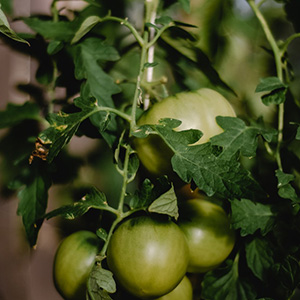 Smart Citations
Smart CitationsSee how this article has been cited at scite.ai
scite shows how a scientific paper has been cited by providing the context of the citation, a classification describing whether it supports, mentions, or contrasts the cited claim, and a label indicating in which section the citation was made.
Hyperspectral prediction of pigment content in tomato leaves based on logistic-optimized sparrow search algorithm and back propagation neural network
Leaf pigment content can reflect the nutrient content of the cultivation medium indirectly. To rapidly and accurately predict the pigment content of tomato leaves, chlorophyll a, chlorophyll b, chlorophyll and carotenoid were extracted from the leaves of tomato seedlings cultured at different nitrogen concentrations. The visible/near-infrared hyperspectral imaging non-destructive measurement technology, 430-900 nm and 950-1650 nm, with total variables of 794, was used to obtain the reflection spectra of leaves. An improved strategy of the sparrow search algorithm (SSA) based on logistic chaotic mapping was proposed, and it optimized the back propagation neural network to predict the pigment content of leaves. Different pretreatment methods were used to effectively improve the prediction accuracy of the model. The results showed that when the nitrogen concentration in the nutrient solution was 302.84 mg·L-1, the pigment content of the leaves reached its maximum. Meanwhile, the inhibition effect of high concentrations was much stronger than that of low concentrations. To address the problem that the SSA is prone to premature convergence due to the reduction of population diversity at the end of the iteration, the initialization of the SSA population by logistic chaotic mapping improves the initial solution quality, convergence speed, and search capacity. The root mean squared error (RMSE), coefficient of determination (R2) and relative percent deviation (RPD) of chlorophyll a were 0.77, 0.77, and 2.08, respectively. The RMSE, R2 and RPD of chlorophyll b were 0.30, 0.66, and 1.71, respectively. The RMSE, R2 and RPD of chlorophyll were 0.88, 0.81, and 2.28, respectively. The RMSE, R2 and RPD of carotenoid were 0.14, 0.75, and 2.00, respectively. Hyperspectral imaging technology combined with machine learning algorithms can achieve rapid and accurate prediction of crop physiological information, providing data support for the precise management of fertilization in facility agriculture, which is conducive to improving the quality and output of tomatoes.
How to Cite

This work is licensed under a Creative Commons Attribution-NonCommercial 4.0 International License.
PAGEPress has chosen to apply the Creative Commons Attribution NonCommercial 4.0 International License (CC BY-NC 4.0) to all manuscripts to be published.

 https://doi.org/10.4081/jae.2023.1528
https://doi.org/10.4081/jae.2023.1528





